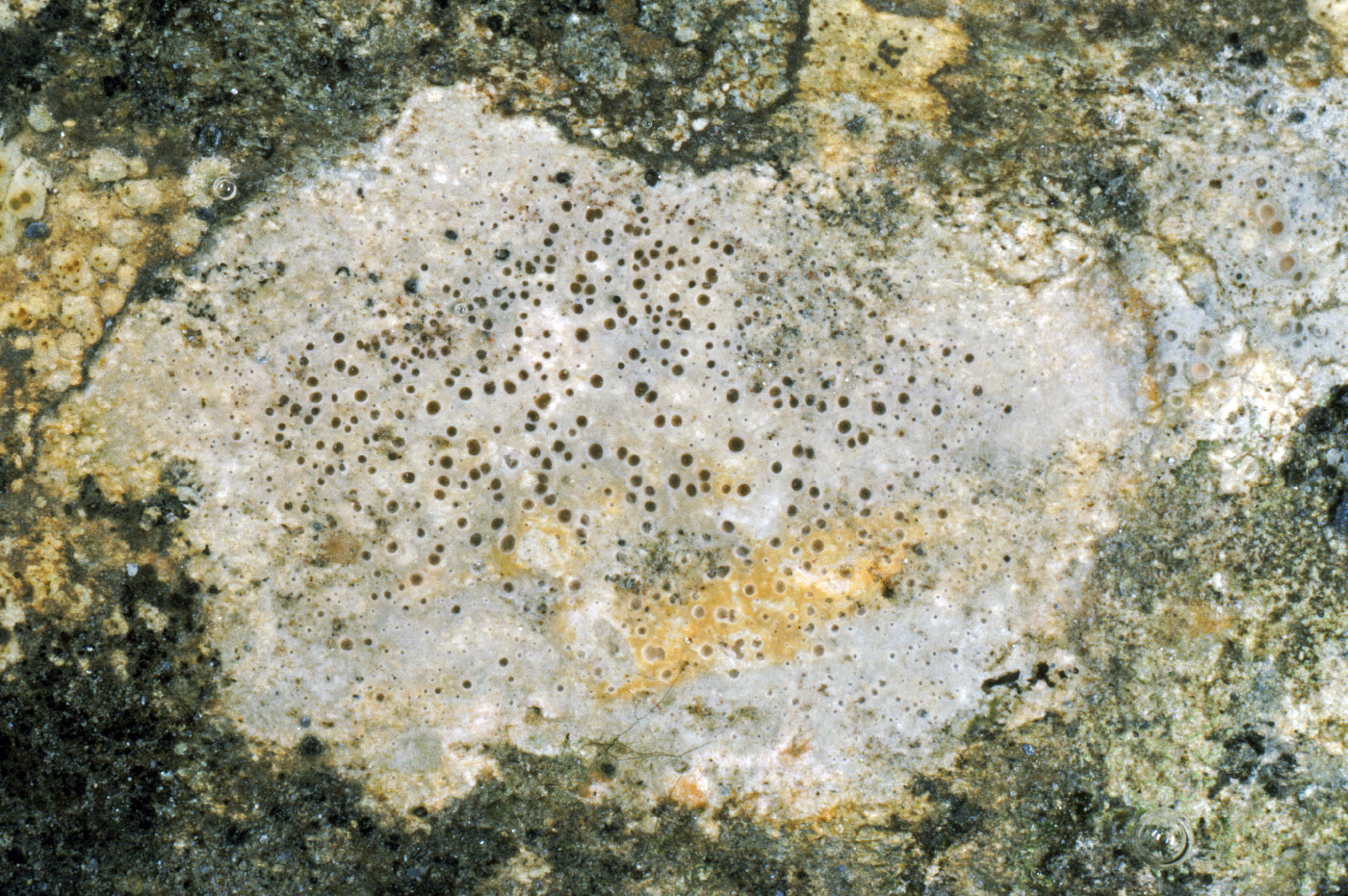
Consortium of Lichen Herbaria
- building a Global Consortium of Bryophytes and Lichens as keystones of cryptobiotic communities -
- Home
- Search
- Images
- Species Checklists
- US States: O-Z >
- US National Parks
- Central America
- South America
- US National Parks
- Southern Subpolar Region
|
Family: Hymeneliaceae |
Nash, T.H., Ryan, B.D., Gries, C., Bungartz, F., (eds.) 2007. Lichen Flora of the Greater Sonoran Desert Region. Vol 3. Life habit: lichenized Thallus: crustose, epilithic, continuous or rimose to rimose-areolate surface: yellow-white to pink-white, light olive-gray to gray-brown or brown, rusty red to orange, orange-yellow or yellow-brown upper cortex: absent medulla: medulla and algal layer not differentiated photobiont: primary one a trebouxioid green alga or Trentepohlia; secondary one absent lower cortex: absent Ascomata: apothecial, immersed, rarely becoming ±sessile, circular, subangular or irregular disc: yellow-orange, orange, red, red-brown or brown, white, yellow or yellowish brown, light to dark gray, or black, concave to ±flat thalline margin: not prominent to slight exciple: thin, broadened in upper part, (0-)25-75(-150) µm thick, hyaline, or orange to orange-yellow, yellow-brown, olive-brown, brown to brown-black, or dark green; N+ orange-yellow, or intensifying dark green to dark blue, or negative; K+ dark violet or negative epihymenium: concolorous with the hymenium, N and K reactions same as exciple, granules (epipsamma) present or not hymenium: hyaline or yellow, orange-yellow, yellow-brown, gray-brown, grayish yellow or gray-olive, or dark green, (45-)75-115(-160) µm thick, I- or rarely I+ blue, N and K reactions same as exciple paraphyses: simple or branched in upper part, anastomosed; apical cells slightly constricted at septa, or submoniliform to moniliform, cells generally larger at the apex subhymenium: hyaline, I+ blue or I-, N-, K- hypothecium: hyaline or pale yellow-brown, N-, K- asci: clavate to cylindrical, the outer coat I+ blue, the inner walls and apical dome I-, 8-spored ascospores: hyaline, simple, ellipsoid, sometimes halonate Conidiomata: pycnidial, immersed conidia: hyaline, simple, bacilliform or filiform Spot tests: thallus K-, P-, C-, I- Secondary metabolites: no substances detected Geography: arctic-alpine, boreal-hemiboreal, and temperate regions, mostly in Northern Hemisphere, but I. lacustris also found in Australasia Substrate: on ±acidic rock in moist situations, as the inundation zone on shores of lakes and streams, or on exposed rocks in mountain summits (I. ventosa), or on small boulders in deciduous forests (I. alba). Notes: For the distinction between Ionaspis and Hymenelia, see Lutzoni and Brodo (1995). Hasse (1898a) mentions Lecanora epulotica var. subepulotica (=Hymenelia epulotica (Ach.) Lutzoni) from California. However, the species is not mentioned later in his flora (Hasse 1913), and we consider this report to be doubtful. Even though Ionaspis lacustris (With.) Lutzoni is reported from the region, studied specimens with that name turned out to be Ionaspis alba or did not belong to Hymenelia or Ionaspis. |
Powered by Symbiota









